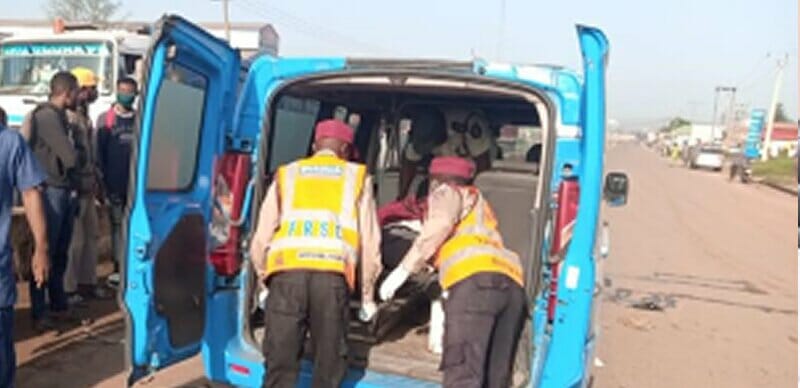The Federal Road Safety Corps (FRSC), said persons numbering 106,256 were involved in road traffic crashes in the country from January 2019 to December 2021.
The data released by FRSC, which documented road crashes between January 2019 and October 2021, explained that of the number, 14,773 died from 31,116 road accidents recorded throughout the period.
The data released also explained that 91,483 persons sustained varying degrees of injury in the crashes recorded.
According to the data, 2021 recorded the highest cases of road traffic crashes, with 10,637 accidents involving 35,791 people.
It explained that a total number of 5,101 people were killed, while 30,690 people were rescued with different degrees of injuries.
The data revealed that Ogun State had the most dangerous roads in the country with the highest road traffic crashes of 1,026 cases in 2021, stressing that Bayelsa State has the safest roads as it recorded the lowest number of road traffic crashes with 40 cases.
The report noted that last year, 10,522 road traffic crashes were recorded between January and December, pointing out that a breakdown of the data shows that 4,794 persons died, while 28, 449 others were injured.
It stated that 2019 had the fewest number of road traffic cases in three years with 9,957 cases, lamented that more people died in 2019 (4,878) compared with 2020, while 32,344 were injured from road traffic crashes in 2019.
Bisi Kazeem, the Public Education Officer of the FRSC attributed road crashes to speeding, route violation, mechanical defect, drunk driving and dangerous driving.
According to him, the corps is broadening the scope of sensitisation to change bad driving behaviours, saying that it has introduced result-oriented policies, especially those that would eliminate speed-related crashes since it has been the major cause of crashes at the moment.
He explained, “The corps has continually put in place mechanisms that will prevent road crashes. Some of these preventive measures are enhanced visibility, broadened, strengthened and sustained stakeholders’ engagement and collaboration, improved personnel capacity in road safety management, effective patrol operations, and of course widened public enlightenment campaigns.”
He added that strategic interventionist approaches were always subjected to reviews to meet the dynamics and challenges of the moment.
